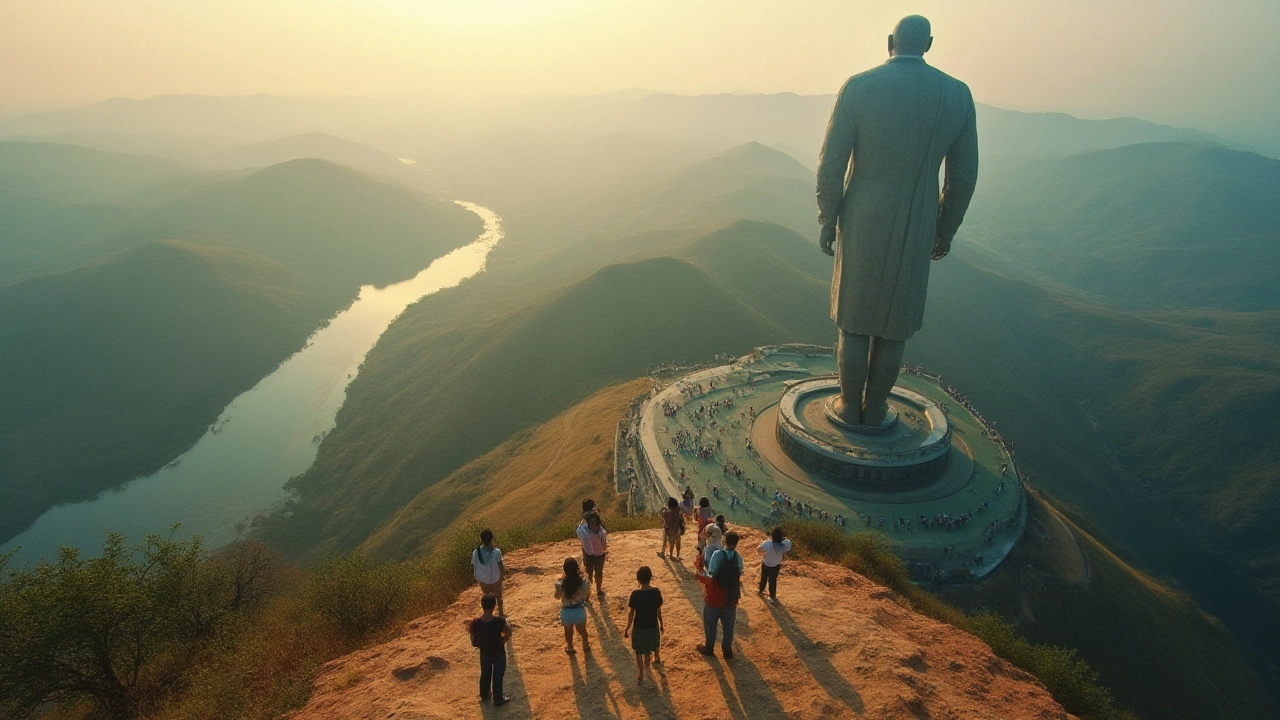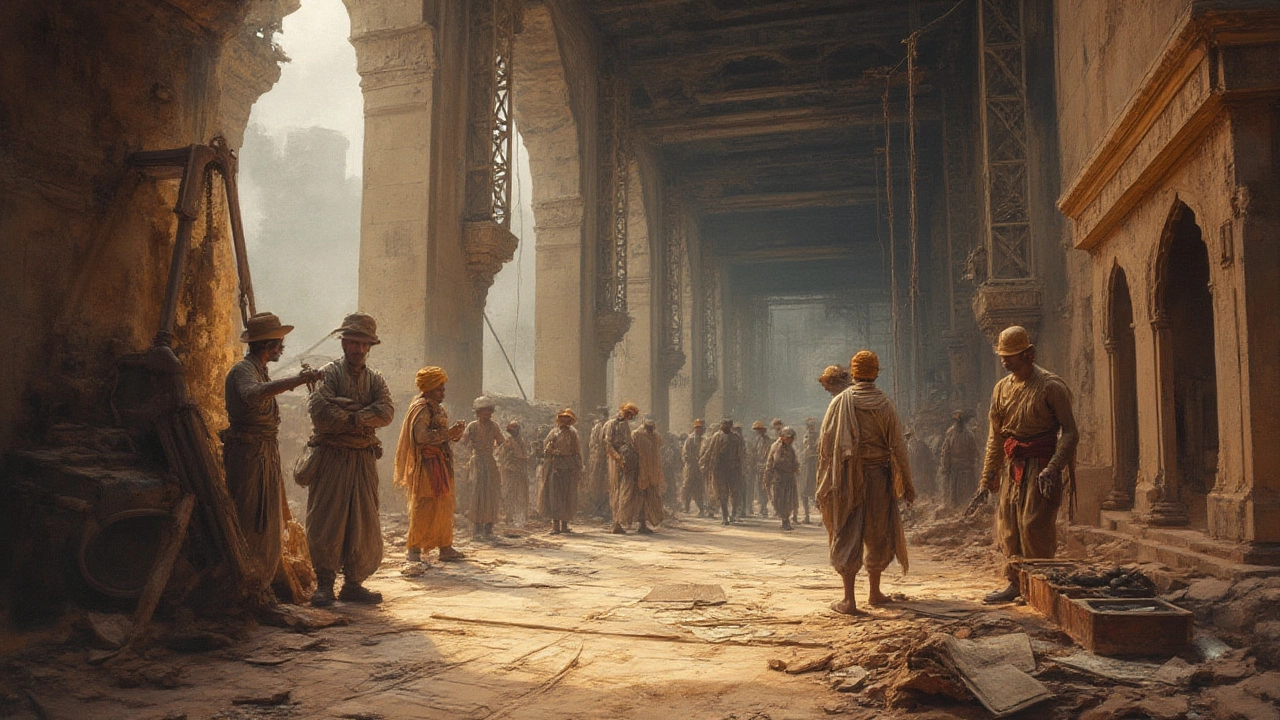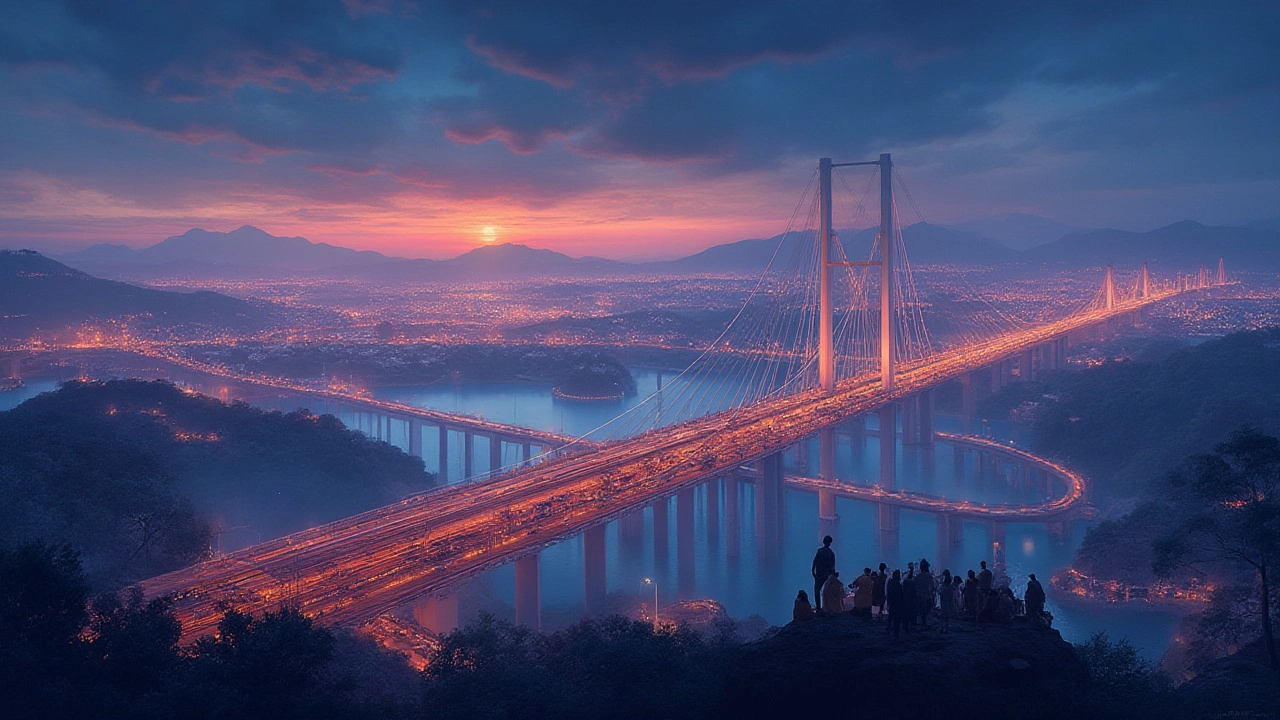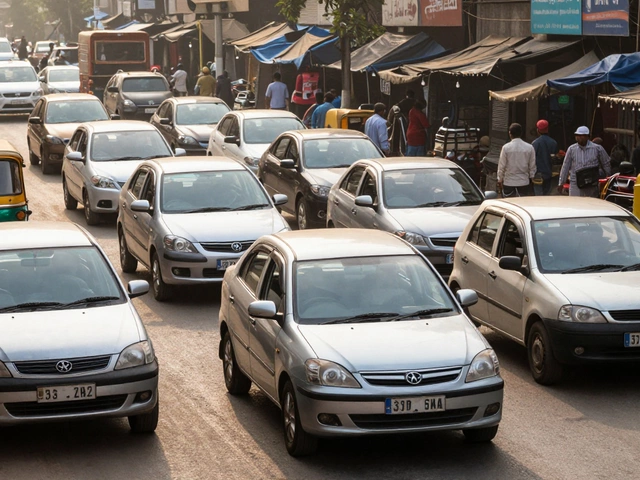Largest Man-Made Wonders in India: The Tallest and Biggest Creations Revealed

Have you ever looked at a monument and wondered how humans pulled off something so massive? India is home to some wild structural achievements, and when it comes to the absolute biggest, there’s a clear superstar standing above the rest. It isn’t just about the tallest building or the longest bridge—it's about mind-blowing scale you really need to see in person to believe. Let's dig into the stories, records, hard data, and a few fun behind-the-scenes tidbits about India’s largest man-made creation.
The Biggest of Them All: The Statue of Unity
India’s claim to global fame in the world of monumental constructions is the Statue of Unity. Located in the state of Gujarat, this colossal statue towers above the Narmada River, almost like it’s watching over the whole nation. Clocking in at a jaw-dropping 182 meters (that’s 597 feet—almost twice the height of the Statue of Liberty), it’s currently the tallest statue on the planet. To really appreciate it, you have to lay out the numbers. Here’s a stat table for easy reference:
| Feature | Statue of Unity |
|---|---|
| Height | 182 meters (597 feet) |
| Material Used | Bronze cladding, reinforced concrete and steel framing |
| Total Cost | Approx. ₹2,989 crore (around $430 million) |
| Construction Time | Started October 2014, completed October 2018 |
| Location | Kevadia, Gujarat |
| Dedicated To | Sardar Vallabhbhai Patel |
| No. of Visitors (first year) | Over 2.6 million |
The statue is dedicated to Sardar Vallabhbhai Patel, a key leader in India’s independence movement, often called the ‘Iron Man of India.’ It was built to inspire unity and bring the nation together, but it’s also become a magnet for tourists, selfie-takers, school field trips, and, honestly, anyone who wants their mind blown by pure scale. They even made sure the face of the statue matched Patel’s distinctive features by using 3D modeling and old photographs, so this isn’t just a hollow showpiece. Inside, you’ll find exhibitions, high-speed elevators, and an observation deck at 153 meters—tall enough for a dizzying view of the Sardar Sarovar Dam and the lush lands around it.
Flipping through my cat Molly’s Instagram, I swear I see more selfies in front of the Statue of Unity every month than next to the India Gate or even the Taj Mahal. There’s just something about being dwarfed by this mega-structure that appeals to everyone, whether you’re into history, architecture, or just enjoy a jaw-dropping view.
Building Giants: The Engineering Behind India's Largest Structure
Taking on a project like the Statue of Unity wasn’t exactly a walk in the park. For starters, engineers needed to make sure this statue wouldn’t topple over in gusty river winds or earthquakes—which meant getting all Goldilocks with the base and foundations. They worked with the world’s top architects, including Michael Graves and Indian firm Turner Project Management, to design a core strong enough to hold the statue’s weight and shape without looking like a boxy block. The outer skin is bronze panels that were cast in China and assembled onsite with the help of massive cranes. The internal structure needed so much reinforced steel and concrete that, by weight, you could probably build a small airport.
One wild fact: the outer ‘skin’ is designed to withstand 180 km/h winds, and the base can handle earthquakes measuring up to 6.5 on the Richter scale. They even factored in seasonal temperature swings so Patel’s giant bronze feet won’t crack in Gujarat’s blazing heat. There are two express elevators zipping up the inside thighs of the statue (try not to giggle at the thought). Each one can take over 20 people all the way up to the chest-level viewing gallery in less than a minute. People with vertigo, you’ve been warned.
- If you want the best view, try going at sunrise—there’s less crowd and you catch the soft golden rays hitting the statue face on.
- Hate standing in lines? Pre-book tickets online—weekends can get busy, with queues trailing out of the visitor center.
- There’s a museum at the base all about Sardar Patel and India’s path to integration—sort of a history crash course before you look up at the main man.
They even landscaped the entire area, creating flower gardens and walking trails. If you’re not worn out from climbing or taking endless photos, there’s a laser and sound show every evening, using the giant statue as a canvas.

How the Statue of Unity Compares: Other Massive Man-Made Creations in India
Now, the Statue of Unity takes the prize for tallest, but it’s not India’s only big-league giant. Take Banasura Sagar Dam in Kerala—it’s the largest earth dam in India and a sight to behold. If you’re after sheer volume, Hirakud Dam in Odisha holds the title for the longest earthen dam in the world, stretching a massive 25.8 kilometers (try jogging that if you’re brave). Then there’s Bandra-Worli Sea Link in Mumbai, which is a cable-stayed bridge running 5.6 km over the sea, linking the city and playing a crucial part in keeping Mumbai moving.
Want a quick at-a-glance comparison? Here’s a little table:
| Structure Name | Type | Claim To Fame | Size/Length/Height |
|---|---|---|---|
| Statue of Unity | Statue | Tallest statue in the world | 182 meters (597 feet) height |
| Hirakud Dam | Dam | Longest earthen dam in the world | 25.8 kilometers (16 miles) long |
| Bandra-Worli Sea Link | Bridge | First cable-stayed bridge built over open sea in India | 5.6 km (3.5 miles) long |
| Banasura Sagar Dam | Dam | Largest earth dam in India | 1,000 meters (3,280 feet) long |
| Qutub Minar | Historical Tower | Tallest brick minaret in the world | 73 meters (240 feet) height |
Each of these projects broke a record or set a standard when they were built. The point is, India isn’t shy about making big things, from ancient times (hi, Qutub Minar!) all the way to the 21st century. The push for bigger, taller, and longer isn’t just about flexing engineering muscle—these structures have jobs to do, whether it’s holding back rivers, bridging neighborhoods, or becoming a new symbol of national pride.
Behind the Hype: The People, Politics, and Stories That Shaped the Biggest
No monument this huge gets built without a fair share of heated debates and a bit of drama. The plan to build the Statue of Unity wasn’t universally loved from day one—there were discussions over spending so much money on a statue while many villagers nearby didn’t even have piped water. Leaders cited Patel’s legacy as a nation-builder and said the statue would bring jobs and boost tourism for the whole region. As it turns out, it did. The economic windfall has been real. Kevadia, once a sleepy district, now sees constant tourist buses, new hotels, and a thriving craft bazaar where locals sell art and snacks on weekends. That’s not to say everyone’s happy. Environmentalists have raised concerns about impacts on wildlife and the river, and at one point, some villagers protested the land acquisition. It’s never simple building a monument this size. Though politics swirled around the project, the engineering teams had to keep things on track in some intense conditions—remember, this went up in a region where monsoons hit hard and summers get scorching (think 45°C / 113°F). For the workforce, there were health camps, food kitchens, and even sports events to keep morale high during the four years it took to finish. By the time the scaffolding came down, the Statue of Unity had become much more than just a bunch of concrete and bronze. People come not just for a photo, but to feel that sense of ‘we did this’—which is honestly kind of infectious.

Planning a Trip or Virtual Visit? Tips, Trivia, and Takeaway Wonders
If you’re itching to check out India’s largest man-made marvel, you don’t need to wait for a holiday. You can book a trip pretty easily online, and the area around the Statue of Unity is packed with activities. Take the eco-friendly buses for a breezy ride from the parking area to the base. Catch the light and sound show if you stick around after sunset, and don’t forget the museum at the base—seriously, you’ll learn why Sardar Patel was a hero even before he became a statue. For families, there’s a boat ride on the reservoir and nice picnic spots; for techies, it’s fun to geek out over the design and construction details shared at the gallery. And for the selfie kings and queens (myself included), sunrise or golden hour is pure gold. One last tip—don’t try scaling up close to the feet on busy weekends unless you love crowds. While the Statue of Unity easily stands tall as the largest man-made structure in India, it’s part of a longer tradition of daring and dreaming big. Whether you’re a history buff, architecture nerd, or just in it for the Instagram likes, this statue has a little something for everyone. Trust me, Molly (my cat) may not appreciate the scale, but humans are wired to be wowed by giants—and this is one giant you want to have on your bucket list.





